Unberthed Planned: 2018 Diameter 3.23 m (10.6 ft) Launch date 8 April 2016 | Length 4.01 m (13.2 ft) Living volume 16.0 m (565 cu ft) Operator Bigelow Aerospace | |
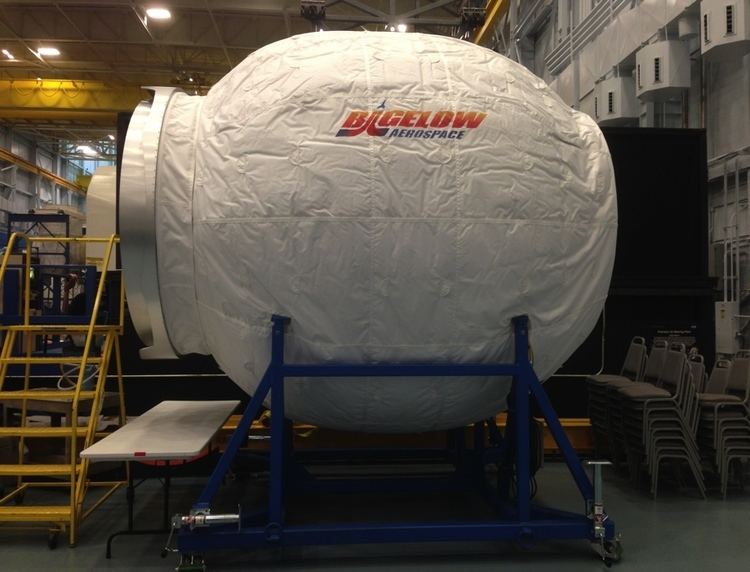 | ||
Berthed April 16, 2016, 09:36 UTCTranquility aft Mass 1,413.0 kg (3,115.1 lb) Similar | ||
The Bigelow Expandable Activity Module (BEAM) is an experimental expandable space station module developed by Bigelow Aerospace, under contract to NASA, for testing as a temporary module on the International Space Station (ISS) from 2016 to 2018. It arrived at the ISS on April 10, 2016, was berthed to the station on April 16, and was expanded and pressurized on May 28, 2016.
Contents
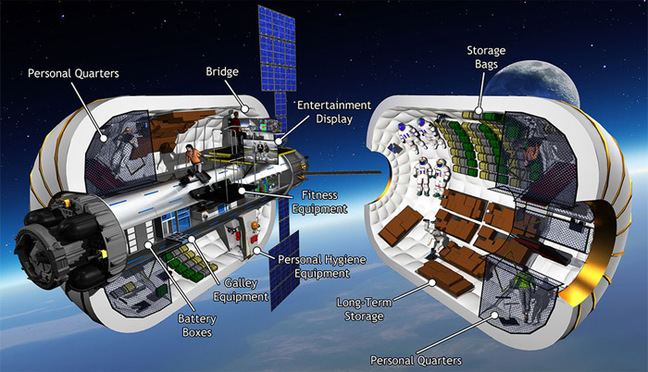
Bigelow plans to build a second BEAM module as an airlock for the Bigelow Commercial Space Station.
History

NASA originally considered the idea of inflatable habitats in the 1960s, and developed the TransHab inflatable module concept in the late 1990s. The TransHab project was cancelled by Congress in 2000, and Bigelow Aerospace purchased the rights to the patents developed by NASA to pursue private space station designs. In 2006 and 2007, Bigelow launched two demonstration modules to Earth orbit, Genesis I and Genesis II.
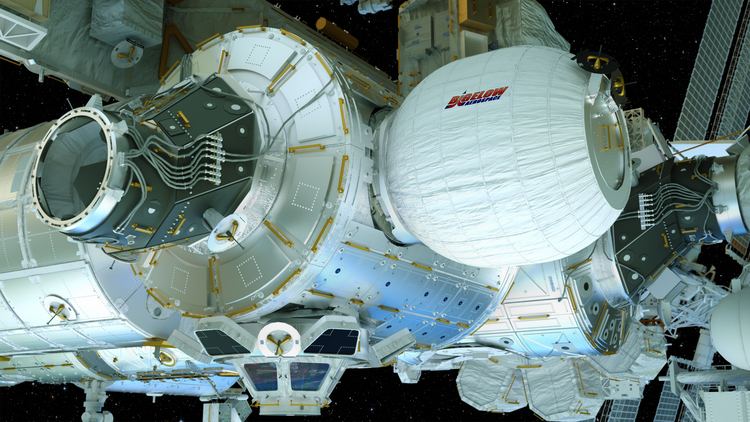
NASA re-initiated analysis of expandable module technology for a variety of potential missions beginning in early 2010. Various options were considered, including procurement from commercial provider Bigelow Aerospace, for providing what in 2010 was proposed to be a torus-shaped storage module for the International Space Station. One application of the toroidal BEAM design was as a centrifuge demo preceding further developments of the NASA Nautilus-X multi-mission exploration concept vehicle. In January 2011, Bigelow projected that the BEAM module could be built and made flight-ready 24 months after a build contract was secured.
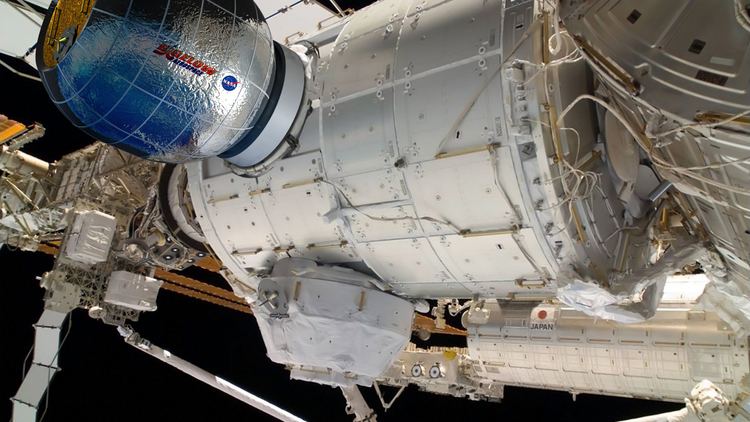
On December 20, 2012, NASA awarded Bigelow Aerospace a US$17.8 million contract to construct the Bigelow Expandable Activity Module under NASA's Advanced Exploration Systems (AES) Program. Sierra Nevada Corporation built the $2 million Common Berthing Mechanism under a 16-month firm-fixed-price contract awarded in May 2013. NASA plans made public in mid-2013 called for a 2015 delivery of the module to the ISS. During a press event on March 12, 2015, at the Bigelow Aerospace facility in North Las Vegas, the completed ISS flight unit, compacted and with two Canadarm2 grapple fixtures attached, was displayed for the media.
Deployment and status
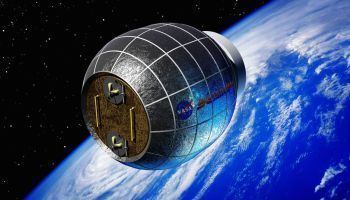
In early 2015, BEAM was scheduled for deployment on the next available ISS transport vehicle, SpaceX CRS-8, which was scheduled for launch in September 2015. Due to a rocket failure during the SpaceX CRS-7 launch in June 2015, the delivery of BEAM was delayed. The successful launch of SpaceX CRS-8 took place on April 8, 2016, and the Dragon cargo vehicle was berthed to the nadir port of Harmony node on April 10. On April 16, British astronaut Tim Peake extracted BEAM from Dragon's trunk using Canadarm2, and installed it on the aft port of Tranquility node.
The first attempt at module inflation took place on May 26, 2016, and was suspended after higher-than-expected air pressure inside BEAM was detected with minimal expansion of the module. The attempt was called off after two hours. The failure to expand and unfold is thought to have been the result of the unanticipated 10-month delay in module inflation, which may have caused the fabric layers to stick together. The module was expanded on May 28 over the course of seven hours, with air being injected 25 times for a total of 2 minutes 27 seconds. Its length was extended 170 cm (67 in) from its stowed configuration, 2.5 cm (1 in) less than expected. After expansion was complete, air tanks aboard BEAM were opened to equalize air pressure in the module with that of the ISS. The module will be monitored for two years.
On June 6, 2016, astronaut Jeff Williams and cosmonaut Oleg Skripochka opened the hatch to BEAM and entered to collect an air sample, download expansion data from sensors, and install monitoring equipment. The hatch to BEAM was re-sealed on June 8 after three days of tests. A second round of tests took place on September 29 of that same year when astronaut Kathleen Rubins entered the module to install temporary monitoring equipment.
Objectives
The BEAM is an experimental program in an effort to test and validate expandable habitat technology. If BEAM performs favorably, it could lead to development of expandable habitation structures for future crews traveling in deep space. The two-year demonstration period will:
At the end of BEAM's mission, the plan was to remove it from the ISS and burn up during reentry. On January 18, 2017, however, Bigelow and NASA announced they were discussing the possibility of extending the on-orbit life of BEAM and using it for other purposes.
Characteristics
BEAM is composed of two metal bulkheads, an aluminum structure, and multiple layers of soft fabric with spacing between layers, protecting an internal restraint and bladder system; it has neither windows nor internal power. The module was expanded about a month after being attached to the space station. It was inflated from its packed dimensions of 2.16 m (7.1 ft) long and 2.36 m (7.7 ft) in diameter to its pressurized dimensions of 4.01 m (13.2 ft) long and 3.23 m (10.6 ft) in diameter. The module has a mass of 1,413.0 kg (3,115.1 lb), and its interior pressure is 14.7 pounds per square inch (1 atm), the same as inside of the ISS.
BEAM's internal dimensions provide 16 m3 (565 cu ft) of volume where a crew member will enter the module three to four times per year to collect sensor data, perform microbial surface sampling, conduct periodic change-out of the radiation area monitors, and inspect the general condition of the module. The hatch to the module will otherwise remain closed. Its interior is described as being "a large closet with padded white walls", with various equipment and sensors attached to two central supports.
Radiation shielding
The flexible Kevlar-like materials of construction are proprietary. The multiple layers of flexible fabric and closed-cell vinyl polymer foam in the BEAM structural shell are expected to provide impact protection (see Whipple shield) as well as radiation protection, but model calculations need to be validated by actual measurements.
In a 2002 NASA study, it was suggested that materials that have high hydrogen contents, such as polyethylene, can reduce primary and secondary radiation to a greater extent than metals, such as aluminum. Vinyl polymer may also be used in laboratories and other applications for radiation shield garments.
BCSS airlock
As of 2013, Bigelow mentioned a concept to build a second BEAM module for use as an airlock on its planned Bigelow Commercial Space Station. The module's inflatable nature would provide room for up to three crew or tourists to spacewalk simultaneously, compared with a maximum of two that can operate outside the ISS.
